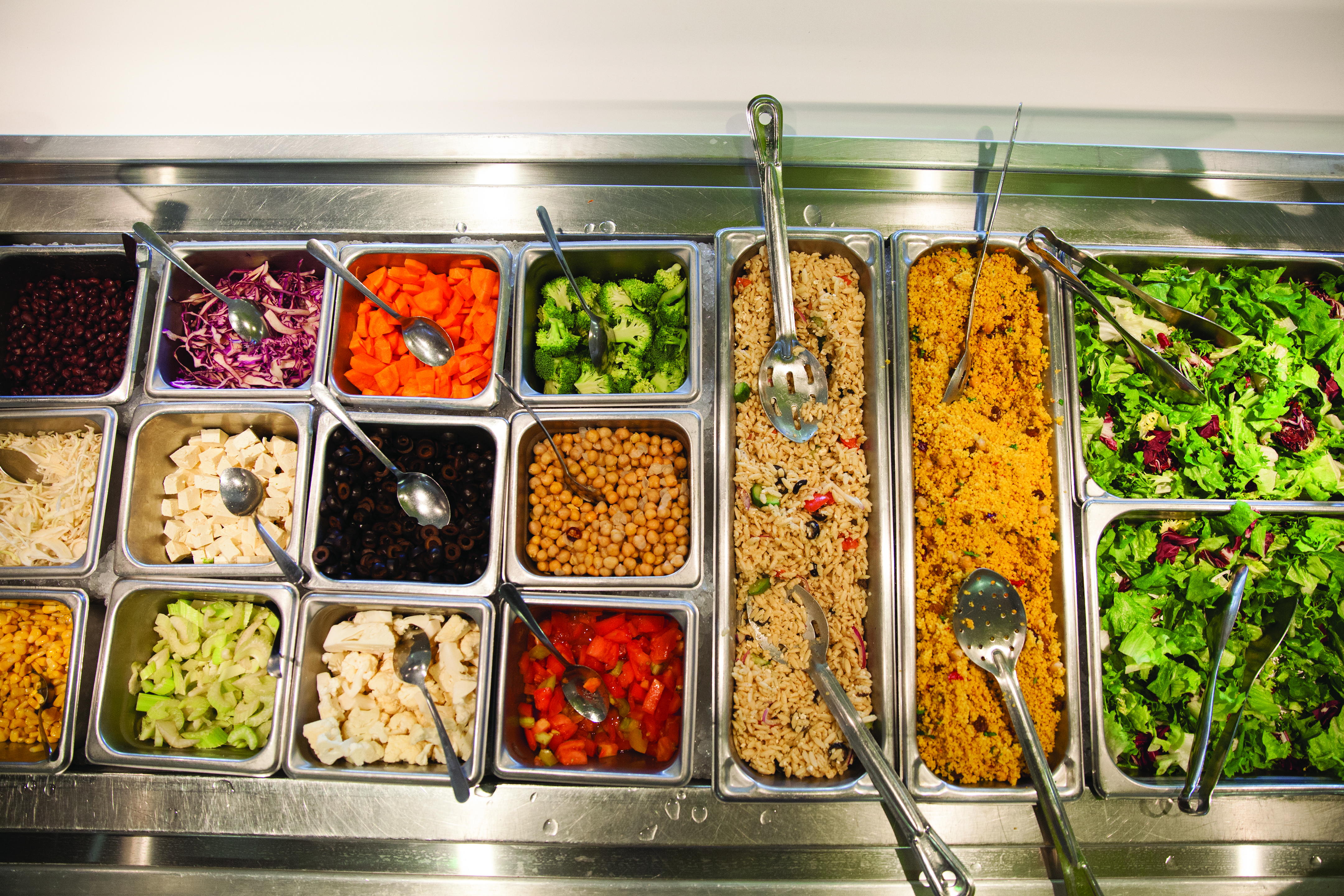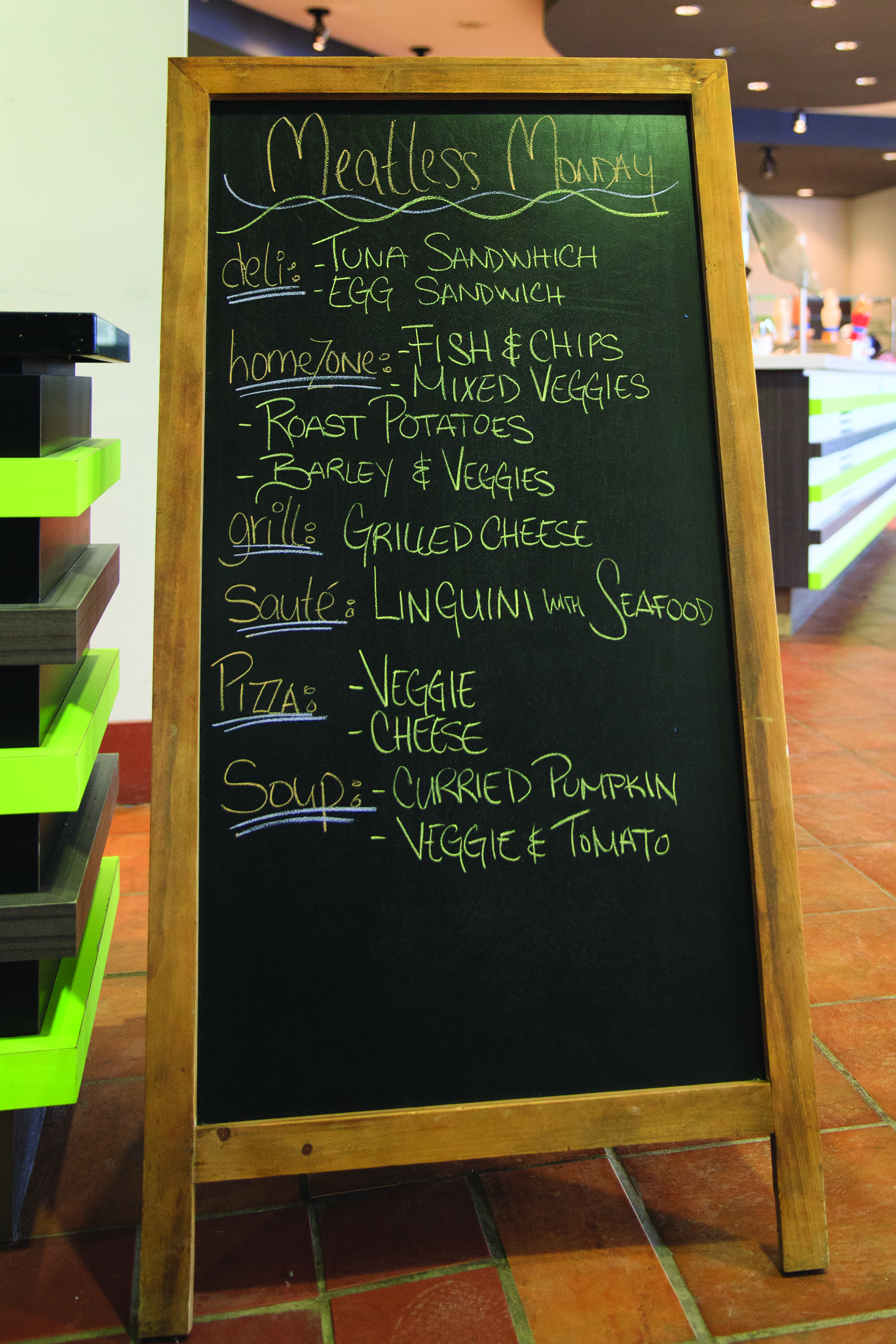We asked students living on campus how they feel about their meal options
In addition to living away from home and adjusting to a university course load, Concordia’s undergraduate students living in residence have the added stress of maintaining a healthy diet. Not being able to have a standard-size fridge and the mandatory purchase of a meal plan through residence forces students to eat three meals a day from various campus dining halls. What options does the Concordia meal plan offer students with dietary restrictions or people that simply want to live a healthy lifestyle?

Gabriella Szabo, a health promotion specialist at Concordia, describes a healthy diet: “We go by what the research shows and it shows that a healthy diet is a plant-based diet. That doesn’t mean only plants but it means lots and lots of plants.” She said that while fruits, vegetables, whole grains and meat proteins play a role in a balanced diet, the focus should be green, lean and rich in protein.
In the menus provided in the dining halls, different symbols indicate the various dietary restrictions they cater to. From vegan, vegetarian and gluten free dishes, students with dietary restrictions can easily find a meal suited for them. At first glance, it seems Concordia is taking all the necessary steps to provide a healthy menu for students with different dietary restrictions, but the students beg to differ.
Cassidy Charette, a current student at Concordia, has lived on campus over the last year. She said that although the residences try to provide vegetarian options for every meal, they are typically full of carbs and the selection is mediocre.
“The vegetables are usually so over-cooked after boiling them that all their nutritional value is lost,” she said. Charette is not vegetarian but when she has ventured towards meats she says the quality is “debatable” and she has gotten sick from the food on more than one occasion.
Another student, Zoé Realffe Dagenais, on the other hand, struggles to fill a plate due to her vegetarian diet. She often ends up ordering veggie burgers or grilled cheese that she admits are not the healthiest. However, it’s difficult to choose otherwise when the vegetables “clearly come from a plastic bag and kind of taste like rubber,” she said.

On a given day, according to the menu, breakfasts options include protein-based meals which contain cheese, meat, or eggs, therefore excluding vegans and lactose-free students entirely. Other than the seemingly healthy oatmeal option, students can indulge in scones and muffins, all heavy in carbohydrates, fat and sugar.
For lunch, there are a few vegetarian entrees, such as steamed vegetables or medleys including carbohydrates. For dinner, the pattern appears to be the same. There are lots of carb-loaded meals, varieties of meats, either fried or in a sauce, and of course, pasta and pizza.
To help explain the reasons behind the choices of ingredients and menu options, Sabrina Lavoie, the executive director of Food Services, responsible for budget planning and business development explained the breakdown of their budget.
She said that in 2015 and 2016 the total cost of the all-you-can-eat meal plan is $3,990 per student, including $190 of flex dollars for students who want to eat outside of the cafeteria, at different kiosks on campus. The total cost for the 238 days of school is $3,008, meaning approximately $16 a day and $5 per meal, she said.
Lavoie further explained that Food Services has strict contractual regulations with their food provider, Aramark, to reduce the levels of sugar, fats and fried foods as well as ensuring vegetarian and vegan options.
She said that although they control what goes on the menu they do not control the quality of ingredients because it is Aramark’s responsibility. Aramark has a sustainable food requirement, which means 75 per cent of their produce has to be local in the summer, 50 per cent in the fall and 25 per cent in the winter.
With that in mind, the highest percentages of locally sourced ingredients are provided during the least populated time for the university.
Although Lavoie stated that the budget does not necessarily affect the quality of the produce, there is a clear difference in opinion between what Food Services believes they are providing versus what the students are seeing and tasting on their plates.
“I honestly try and avoid eating at the cafeteria but I don’t really have a choice because I paid so much money to have access to it,” Realffe Dagenais said.
Lavoie urges students to attend the monthly food committee meeting, which takes place at both the downtown and Loyola campuses. The meeting brings together residence, Food Services and the food provider to allow for students to speak their mind in regards to the menu and express their likes and dislikes which are often accommodated by the food provider. The next meeting will be held on Feb. 17 at 11:30 a.m. downtown at GN E-104 or 3:30 p.m. at Loyola in the community kitchen in HA.



